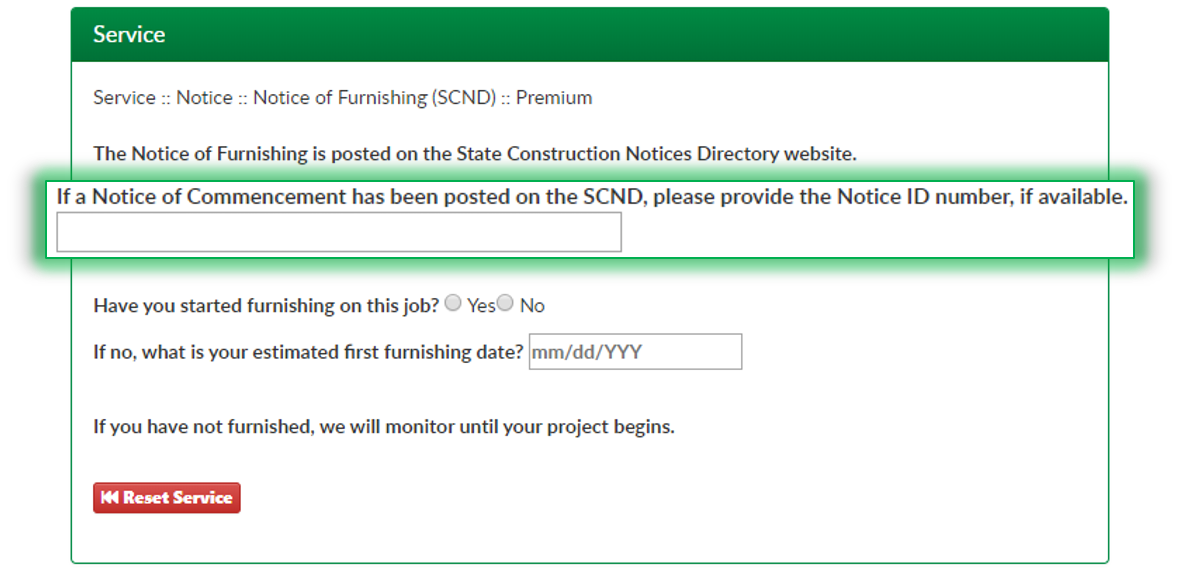
Here’s What You Should Know about Arkansas Mechanic’s Lien and Bond Claim Rights
Did you know that Arkansas is the home of Crater of Diamonds State Park and the park allows the general public to search for diamonds? Not only can you search for diamonds, but the park operates under the best playground rule ever: Finders. Keepers.
Unfortunately, mechanic’s liens and bond claims don’t operate under the “finders, keepers” rule, so be sure to familiarize yourself with the statutory requirements!
Arkansas Mechanic’s Liens
Arkansas has separate notice requirements for commercial and residential projects if the residential project is 4 or fewer units.
- Commercial and Residential (with more than 4 units): Serve notice of non-payment upon the owner and prime contractor after last furnishing materials or services, but within 75 days from last furnishing materials or services.
- Residential (with 4 or fewer units): Include notice in contract or serve residential notice upon the owner before first furnishing materials or services. (The notice may be served after furnishing, but the lien, when later filed, will only be effective from the date the notice was served.) A residential contractor who fails to give the notice may be fined up to $1,000.00 and is barred from bringing an action to enforce any provision of the residential contract.
For commercial & residential projects (with more than 4 units), the notice is not required if you are contracted directly with the owner. For residential projects with 4 or fewer units, the notice isn’t required if the notice is incorporated within your contract, the prime contractor or another lien claimant has served the notice upon the owner, the prime contractor furnishes a payment and performance bond, or you contract directly with the owner, to provide materials or services, but you are not a home improvement contractor or a residential building contractor.
Whether the project is commercial or residential, the mechanic’s lien deadline is the same. You should serve a notice of intent upon the owner at least 10 days prior to filing the lien. Then, file the lien after last furnishing but within 120 days from last furnishing. If the notice of intent cannot be served within the 10-day time frame, file the lien and suit to enforce the lien within 120 days from last furnishing materials or services, requesting both the lien and foreclosure.
In the event you need to proceed with suit to enforce your lien, you should file suit within 15 months from filing the lien.
Did You Know about Bond Claims on Private Projects?
Generally, payment bonds are required for religious or charitable organization construction contracts of $1,000.00 or more. If the payment bond is recorded, only the prime contractor shall have a lien on the property.
A.C.A. 18-44-504 Construction by religious or charitable organizations.
(a) No contract in any sum exceeding one thousand dollars ($1,000) providing for the repair, alteration, or erection of any building, structure, or improvement shall be entered into by any church, religious organization, charitable institution, or by any agency of the foregoing, unless the contractor shall furnish to the party letting the contract a bond in a sum equal to the amount of the contract.
(b)
(1) The bond shall be filed in the office of the clerk of the circuit court in the county in which the property is situated.
(2) Any person or his or her assigns to whom there is due any sum for labor or material furnished may bring an action on the bond for the recovery of the indebtedness. No action shall be brought after six (6) months from the completion of the church, hospital, orphanage, charitable institution, or benevolent institution.
(3) If the bond is not filed as provided in this subsection, any person performing labor or furnishing material, except the principal contractor, shall have a lien upon the property for the unpaid amount of the claim.
It is recommended to serve notice upon the owner and prime contractor after last furnishing materials or services, but within 75 days from last furnishing materials or services. It is recommended to serve the bond claim in accordance with the terms of the bond; frequently a bond claim should be served within 90 days from last furnishing.
Arkansas Bond Claims
Payment bonds are typically required for general contracts exceeding $35,000, however, contracts executed by the Arkansas Department of Transportation are exempt from this bonding requirement.
A.C.A. 22-9-203 (G) Such other pertinent facts or information which to it may appear necessary or desirable.
(2)(A)(i) Every bid submitted on public construction contracts for any political subdivision of the state is void unless accompanied by a cashier’s check drawn upon a bank or trust company doing business in this state or by a corporate bid bond.
(ii) Every bid submitted on public construction contracts for the state or any agency or department of the state is void unless accompanied by a cashier’s check drawn upon a bank or trust company doing business in this state or by a corporate bid bond, except for projects under thirty-five thousand dollars ($35,000).
(iii) A bid bond is not required for public construction contracts for the state or any agency or department of the state under or equal to thirty-five thousand dollars ($35,000).
(B) This bid security shall indemnify the public against failure of the contractor to execute and deliver the contract and necessary bonds for faithful performance of the contract.
(C) The bid security shall provide that the contractor or surety must pay the damage, loss, cost, and expense subject to the amount of the bid security directly arising out of the contractor’s default in failing to execute and deliver the contract and bonds.
(D) Liability under this bid security shall be limited to five percent (5%) of the amount of the bid.
You should carefully review the terms of the bond to determine when the bond claim should be served & who should receive a copy of the claim. Frequently a bond claim is required within 90 days from last furnishing. You should file suit to enforce the bond claim within 6 months from the date final payment is made on the contract (or 12 months from the date final payment is approved on Arkansas Building Authority projects).









